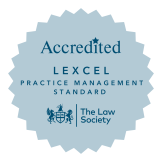Blog
How long do penalty points stay on a UK license
- Posted:
- 20 December 2024
- Time to read:
- 4 mins
Penalty points are used by the UK government as a form of punishment and serve as an indication to the Driver and Vehicle Licensing Agency (DVLA) that a driver has violated a driving related law. The number of penalty points issued either by way of a Fixed Penalty Notice or by the court typically depend on the severity of the offence.
Factors Affecting the Duration of Penalty Points
There are a number of different factors that are taken into consideration when looking at how long penalty points, or ‘endorsements’, remain on a person’s driving record for. endorsements stay on person’s driving record or 4 or 11 years, depending on the offence, and start either from the date of the offence or the date of conviction.
Some common offences and the length of time the endorsement remains on a driving record are as follows:
| Code | Offence | Penalty Points | Time of Driving Record |
| AC10 | Failing to stop after an accident | 5 to 10 | 4 years from date of offence |
| BA10 | Driving while disqualified by order of Court | 6 | 4 years from date of offence |
| BA40 | Causing death by driving while disqualified | 3 to 11 | 4 years from date of conviction |
| CD10 | Driving without due care and attention | 3 to 9 | 4 years from date of offence |
| CU10 | Using a vehicle with defective brakes | 3 | 4 years from date of offence |
| DD40 | Dangerous driving | 3 to 11 | 4 years from date of conviction |
| DR10 | Driving or attempting to drive with alcohol levels above limit | 3 to 11 | 11 years from date of conviction |
| DR40 | In charge of a vehicle while alcohol level above limit | 10 | 4 years from date of the offence or 4 years from the date of conviction if disqualification imposed |
| DG10 | Driving or attempting to drive with drug level above the specified limit | 3 to 11 | 11 years from date of conviction |
| LC20 | Driving otherwise in accordance with a licence | 3 to 6 | 4 years from date of offence |
| SP30 | Exceeding statutory speed limit on a public road | 3 to 6 | 4 years from date of offence |
Validity of Endorsements
Endorsements are ‘valid’ for the first 3 years for a 4-year endorsement or 10 years for an 11- year endorsement. After three years, penalty points become ‘inactive’ and do not count towards a totting disqualification, however, they will still be visible on a person’s driving licence until the end of the fourth or eleventh year.
This means that if someone (who has been a driver for two years or more) accumulates 12 or more penalty points within a 3-year period, they can be disqualified under the ‘totting’ disqualification provisions. When considering whether to impose a disqualification for ‘totting’, the court will look at the points that were on a person’s licence at the time the latest offence s committed, not the date on which a person appears before the court.
New exemptions to using a mobile phone while driving
The Road Vehicles (Construction and Use) (Amendments) Regulations 2024, which were laid before Parliament on 4 November 2024, could bring an overhaul to the use of mobile devices while driving for the first time since 2003.
The Department for Transport (“DfT”) has decided to implement changes to the existing regulations, which are due to come into force on 24 November 2024. This change will allow emergency service drivers in the UK to use hand-held mobile devices, namely Airwave Tetra and Emergency Services Network systems, in a new exemption approved by the government.
The new exemptions will be limited to “press-to-talk” mode on devices, with any other hand-held use remaining prohibited. One of the main aims of the new exemption is to address the uncertainties surrounding the use of communication devices used by the emergency services since the initial ban on hand-held mobile phone use while driving was introduced over two decades ago.
Currently, under the law, drivers can receive six penalty points and a £200 fine if caught holding and using a hand-held mobile device (such as a phone, sat nav, tablet or any device that can send or receive data) while driving. There are already a limited number of exemptions to holding and using a device, which includes:
- Needing to call 999 or 112 in an emergency and it is unsafe or impractical to stop
- The vehicle is safely parked
- You are making a contactless payment in a vehicle that is not moving; for example, at a drive-through restaurant
- You are using the device to park the vehicle remotely.











